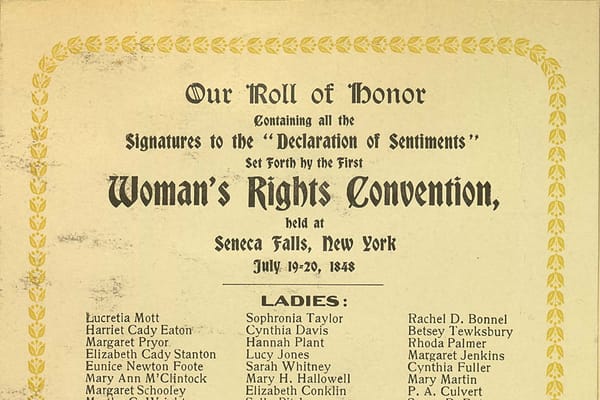The Endless Frontier
This month marks the 80th anniversary of a report that transformed American science and technology. In July 1945, Vannevar Bush delivered a report to President Harry Truman titled “Science: The Endless Frontier,” outlining a bold set of recommendations for future US science policy. The story of Bush’s vision and its aftermath is beautifully told in Jonathan R. Cole’s book “The Great American University” (Public Affairs, 2009; see Chapter 3). This brief overview is my own distillation of Cole’s account.
Before the second world war, America was more or less a backwater when it came to scientific research. If a young scientist wanted to learn the state-of-the-art, the place to go was Europe—and within Europe, until the early 1930s, the center of innovation was Germany. That state of affairs ended abruptly in 1933. Within months of the Nazi party’s rise to power, German universities were purged. Virtually overnight, scores of German scientists became refugees. The US was the biggest beneficiary of that exodus, as many of the world’s most talented and accomplished scholars—including Albert Einstein and many other immigrant physicists, a number of whom who would go on to play critical roles in the Manhattan Project—found a warm welcome in American universities and research institutes.
The talent migration from Europe to the US in the 1930s brought a powerful injection of knowledge and innovation to America’s research enterprise. By the mid-1940s, at the conclusion of World War II, the US government faced the question of how to sustain that enterprise. The vision of Vannevar Bush, an engineer and polymath who oversaw wartime R&D as Director of U.S. Office of Scientific Research and Development, was built around three key principles:
· Given that the benefits of science and technology are in the national interest, the federal government should fund basic research.
· Much of the nation’s research should be done in universities (or at least in close proximity to them), where the vigorous exchange of ideas promotes innovation and discovery, and where the marriage of research and education cultivates a highly skilled workforce.
· Research priorities should be determined not by public officials but by researchers, who are best positioned to identify the most important problems.
To achieve this vision, Bush urged the creation of a National Research Foundation: a government entity whose job it would be to orchestrate grant funding on a competitive basis. The Foundation would not do research itself; rather, its role would be to create funding programs based on priorities identified by the research communities, and to oversee a highly competitive process for awarding grants to those with the most innovative and promising ideas. The Foundation was to be as insulated as possible from political interference, so that it could focus solely on supporting cutting-edge research.
In the end, although the implementation of “The Endless Frontier” deviated in several important ways from Bush’s original concepts, much of his vision did come to fruition. A key element was the establishment, in May 1950, of the National Science Foundation (NSF).
NSF’s mission, then and now, is to “to promote the progress of science, to advance the national health, prosperity, and welfare, and to secure the national defense”. To help shield research from political winds, NSF was created as an independent entity, rather than as a branch of an existing government department. (This contrasts with the National Institutes of Health [NIH], which sits within the Department of Health and Human Services.)
How expensive was it? By US federal government standards, NSF was and is a small operation. In 2024, for example, its total budget was roughly $9 billion; in the same year, the US military budget was nearly 100 times as large. Yet by Cole’s accounting, the creation of NSF and NIH after the second world war powerfully energized American science, transforming American universities along the way. In the decades after world war two, the US grew from a scientific backwater into the undisputed global leader. For example, despite the fact that the US holds only 4% of the world’s population, by the first decade of the 21st century, American universities consistently dominated global rankings of research universities, and American scientists dominated the rosters of Nobel and other international prizes.
In other words, eight decades after the “Endless Frontier” report, the science policy that it inspired has proven to be wildly successful. Has that success been worth the cost? Economic studies consistently show that public investment in basic research more than pays for itself, through increased tax revenues generated indirectly by the fruits of research (see for example a recent study by Fieldhouse and Mertens: https://doi.org/10.24149/wp2316). America’s eighty-year run of global leadership in research, it seems, has been a win both for innovation and for the treasury.
The question looming now is whether the US congress will continue or abandon this eight-decade success story. Historically, the national research mission was always non-partisan, as it should be. Yet the historic pattern of bipartisan support for the national science mission shifted abruptly in 2025, as science agencies like NOAA, NIH, NSF, and NASA—agencies that have long been points of national pride—suddenly became targets for widespread layoffs and draconian budget reductions. Frankly, I am deeply dismayed: in my 35-year career in research and teaching I have never before witnessed anything like the disruption and uncertainty in the US science sector that have played out over the past several months.
After 80 years of vibrant innovation, is the Endless Frontier now approaching a premature end? With the FY26 budget bill now working through congress, we will learn in the coming weeks whether the current government intends to sustain or eviscerate America’s long and productive tradition of scientific excellence.




